Delivery options and delivery speeds may vary for different locations
Sign In
or enter a zip code
Email * Password *
REPAIR & HOW TO
MAINTENANCE
TROUBLESHOOTING
GUIDES
TIPS & TRICKS
ALL ARTICLES WATCH VIDEOS ABOUT US SHOP PARTS CONTACT US
Your motorcycle’s tires connect the bike’s power and handling to the road. When the tires wear out, you face both performance and safety issues.
Nobody wants to change out tires too early due to the extra expense, but doing it too late poses risks. Knowing how to inspect the tires on a motorcycle can help you decide whether it’s the right time to change them out. Here’s how to check your motorcycle’s tires for wear.
Today’s motorcycle tires are better engineered to provide indicators about when they’re worn.
A new tire usually starts with 5-6 millimeters of tread depth that shallows the grooves as the tire wears down. There are small bumps in the grooves of the tire tread that serve as wear indicators. When the tread surface is worn down to those bumps, there’s about 1mm of tread left, which means it’s time for a change.
When to Change a Motorcycle TireYou should change a tire before it reaches 1mm of depth, because once the tire is worn down to that level, the grooves are less effective at channeling water out from between the contact patch of the tire and the road.
Two millimeters of tread depth is about as low as you should let it go. You don’t need a fancy measuring instrument
or other tire tools to detect 2 millimeters of tread depth. Use a penny if you don’t have a measuring tool handy.
You don’t need a fancy measuring instrument
or other tire tools to detect 2 millimeters of tread depth. Use a penny if you don’t have a measuring tool handy.
The distance between the top of President Lincoln’s hair and the edge of the penny is about 2mms. Place your penny in the tire groove with Honest Abe headfirst. If you can see the top of his hairline sighting along the tire’s surface, then Lincoln says it’s time to make a change.
Motorcycle Tire WearTires on your machine can wear out in a number of ways. When kept on the machine too long, the tire will continue to wear all the way down to the cords, creating a dangerous situation.
Other tires might exhibit an irregular wear pattern. This can be the result of many mechanical factors including a misaligned wheel, which can create an uncomfortable ride as a cupped feature develops on the tire tread.
Motorcycle Tire Dry RotAn overlooked issue when evaluating motorcycle
tires is dry rot.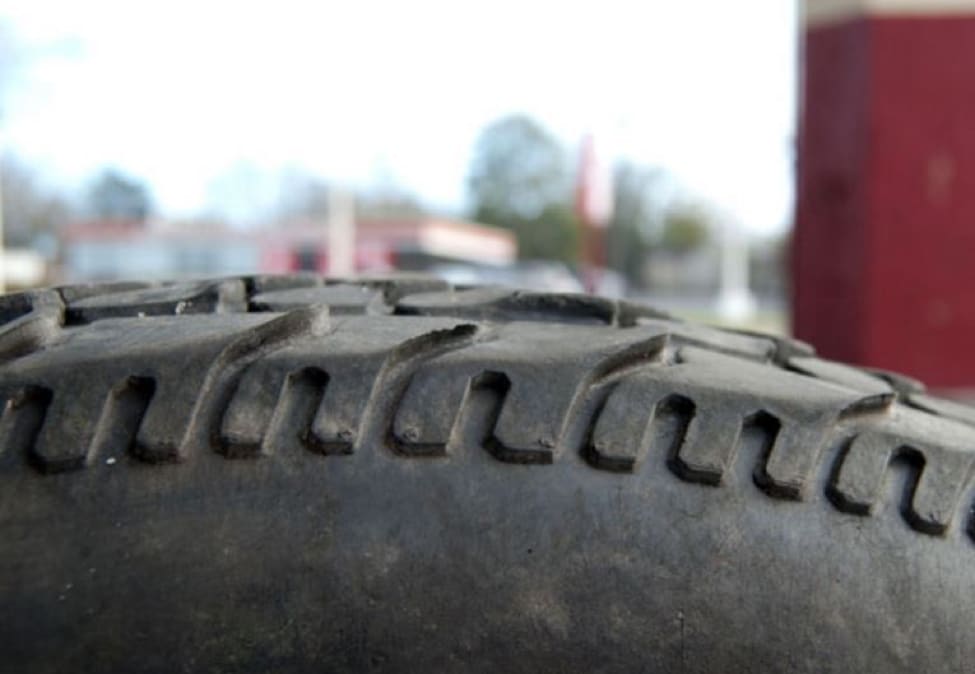 Over time, a tire becomes less supple and can start to crack. It can make the tire more susceptible to blowouts or coming apart at the bead where the tire is tucked under the wheel.
Over time, a tire becomes less supple and can start to crack. It can make the tire more susceptible to blowouts or coming apart at the bead where the tire is tucked under the wheel.
Fortunately, every manufacturer stamps a manufacture date on their tires, which can serve as an expiration date of sorts to give you guidance on when a tire's time is coming up. It's generally a four-number code:
For example, "4907" indicates the tire was manufactured in the 49th week of 2007.
How Old is Too Old?The industry standard for the lifespan of a motorcycle tire is six years, but five years is a better time to retire a tire. Higher performance tires with softer rubber compounds can degrade even quicker than that, so make sure you keep up with the maintenance, and check the tread depth on your tires often to keep your machine riding and handling safely.
body
Skip to content
Brittney and her pup, Shawty (“Shorty” with a southern twang), tackle DIY motorcycle maintenance in their own garage together.
In WRN's do it yourself (DIY) section, we cover simple, affordable check-ups you can easily perform yourself that will keep your motorcycle safe and running well. You can find your bike’s service intervals and important bike-specific information in what we like to call M.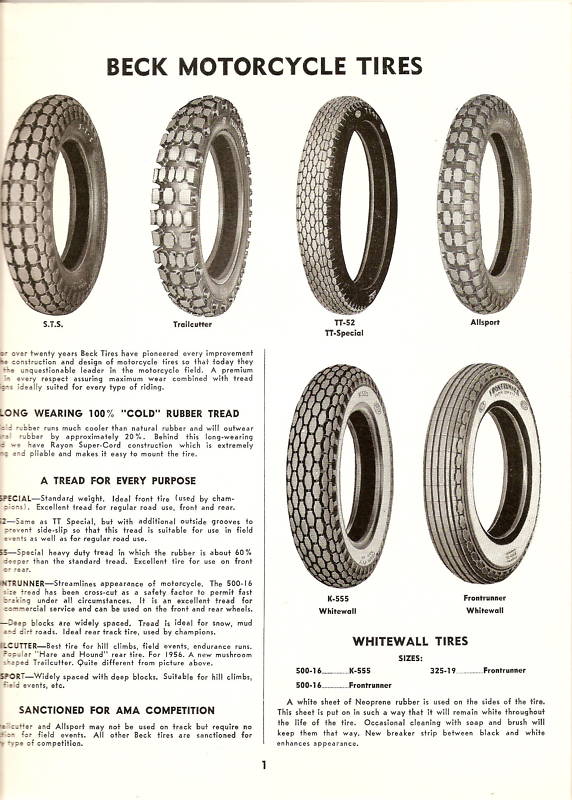 O.M. That's your motorcycle owner’s manual. M.O.M. always has the answer!
O.M. That's your motorcycle owner’s manual. M.O.M. always has the answer!
In this article we will cover one of the most important parts of your bike—tires. Your motorcycle tires are the only things that make contact with the road when you’re riding, so it’s important to take good care of them.
Punctures can be present without a leak and are hard to notice without a good inspection.
Check your motorcycle’s tire pressure often, at least once a week, but better yet before every ride, even if you ride every day. If there is a significant change in air temperature overnight or between rides, there’s a good chance your tire pressure may have changed too.
Check the motorcycle tire pressure if you add a load or change elevation significantly and will be riding at the new elevation for more than an hour. For example, the difference between sea level and Big Bear Lake, California, is almost 8,000 feet and can be ridden in three hours.
Information on specs for motorcycle tire pressure will come from M.O.M. It might even be on a sticker on your bike's swingarm or frame.
Keep an eye on your tread wear as well, always making sure it has not yet worn down to the level of the wear bar (arrow). If the wear bar is level with the tire’s surface, it is time to replace it.
If you are unable to find a wear bar on your tire, you can measure the tread depth with a tread depth gauge or a simple ruler (if it fits).
If you find an offending object that is embedded in place, if the tire is not losing air, cautiously ride to the nearest shop for inspection. Whether it is leaking or not, you may be able to get professional help to remove the object and repair the puncture on site. You may also be able to apply a tire patch to get you to the shop without leaving you stranded.
You can check if the puncture is causing a leak by spraying a small coating of Windex or soapy water (or saliva in a pinch) over the object or puncture wound and watch for bubbles.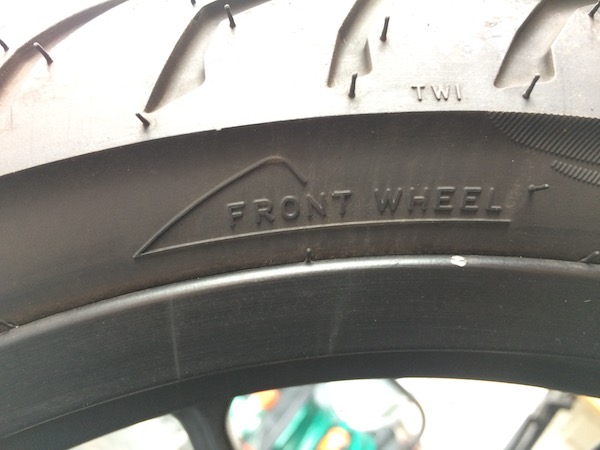 If there are no bubbles it is holding air.
If there are no bubbles it is holding air.
If your bike’s tire pressure is high or low, simply release or fill with air until it is at the recommended pressure. It is normal for tire pressures to vary due to heat, elevation, and weather changes. So check often and maintain accordingly.
This portable MotoPump Mini Pro inflator gets power right from your motorcycle’s battery, and has a built-in LED light and backlit air pressure gauge which makes it easy to inflate tires on the go.
90-degree valve stems like this one allows for easy access when checking tire pressure and adding air. If your motorcycle doesn’t have one, they can be installed the next time you have the tires changed.
The general rule of thumb for tread wear is that anything less than 3/32” or approximately 2mm means it’s time to replace your tire.
This tire passes the top of Lincoln's head, passing the test.
Keep an eye on the age of the tires. Every DOT tire has an age stamp on the sidewall, indicating the week and year of manufacture.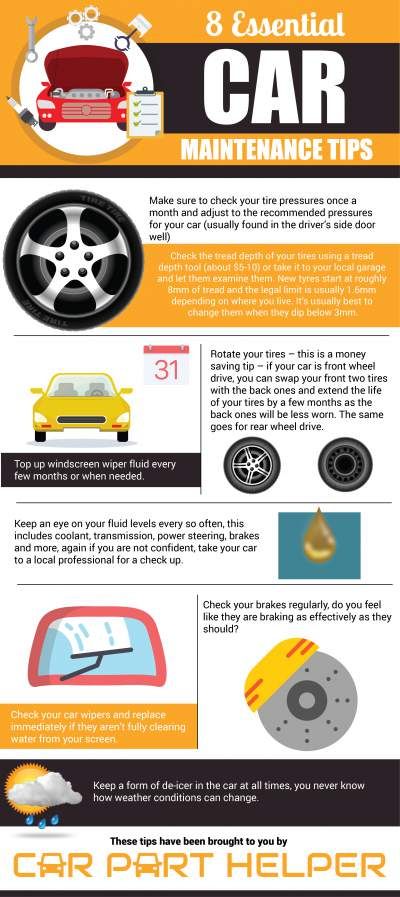
This number represents the week and year of manufacture. This tire came to life on the sixth week (February) of 2016. Fun fact: the date stamp is always on the left side of the front tire and the right side of the rear.
A guaranteed safe age is less than two years for sport tires and less than three years for touring or cruising tires. This will change significantly between manufacturers and how you treat and store your bike. So use this information as a basic guide.
If your tire is beyond its age limit and you’ve confirmed this with the manufacturer, replace it. You never know what the inside of the tire looks like and dry rot can be an invisible danger.
If you find that you only need to replace one tire, you need to replace it with the same make and model of the tire. Tire tread patterns are engineered to work together, and mixing two different tread patterns and compounds can cause a dangerous situation. And please, for the love of riding, always select a motorcycle-specific tire!
Do not get overwhelmed by the overly-complicated size, load rating, speed rating, and compound explanations you might find on many online tire guides.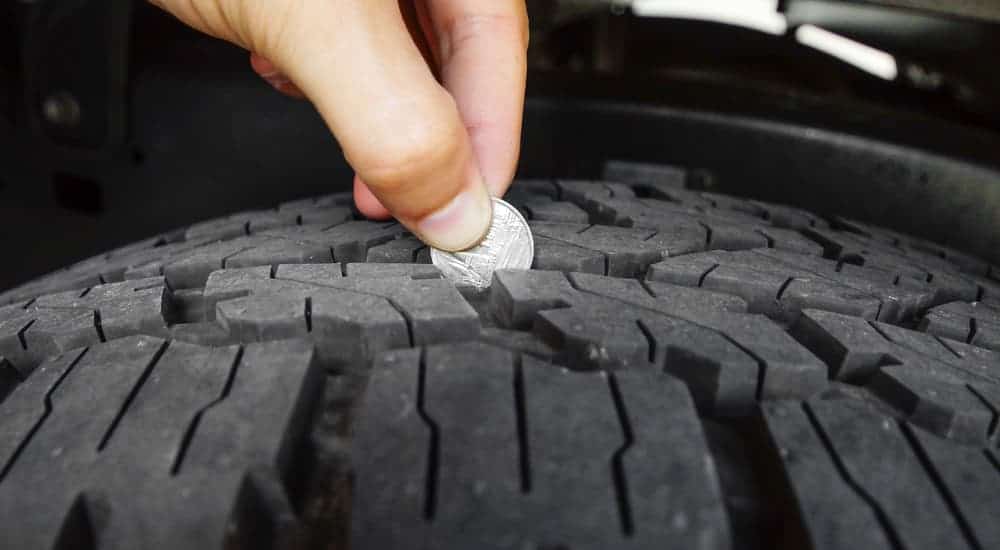 What you really need to know can be explained in a few simple steps.
What you really need to know can be explained in a few simple steps.
Many original equipment (OE) motorcycle tires were designed to work best on that very bike. So if you don’t know what tire to choose when it’s time to replace them, you can always stick with the OE tire.
So if you don’t know what tire to choose when it’s time to replace them, you can always stick with the OE tire.
Many shops or dealerships will charge extra (or won’t install them at all) if you buy the tires elsewhere and bring them in to be mounted. Don’t deny your local shop the opportunity to earn your business: shop for your tires there.
Falling prey to price: Online deals can seem too-good-to-be-true and are hard to pass up. Keep in mind, tire bargains from a warehouse could indicate a batch of old tires that they want to get rid of.
Longevity: meant to last as long as possible, usually requires a hard compound that heats up slower and doesn’t “melt” or wear down as quickly. Great for touring and cross-country riding.
Aggressive Profile: meant to maximize traction at excessive lean angles. Great for racing.
Multi-Surface: meant for riding both on and off the street with a ratio represented in percentages.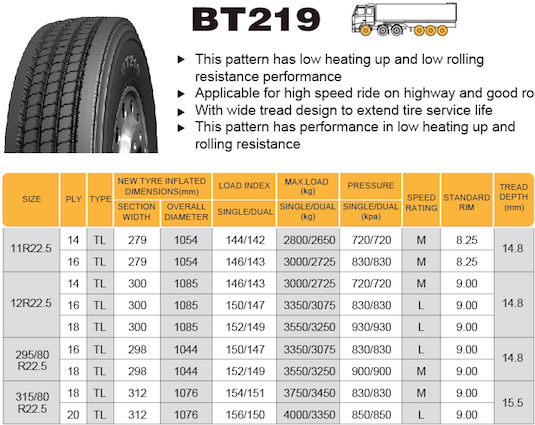 For example, 70% street, 30% dirt. Great for exploring the wild outdoors.
For example, 70% street, 30% dirt. Great for exploring the wild outdoors.
Multi-Compound: meant to combine longevity (commuting or touring) and traction (curvy roads) by making the tire from rubber that is harder in the center and softer on the edges. This means certain parts of the tire heat up faster/slower and have more/less traction and flex. Great for riders who commute every day and hit the twisties on their days off.
The Metzeler 888 Marathon Ultra (left) and Pirelli MT 66 Route (right) are good examples of touring tires that are engineered to last for many miles.Sport tires such as the Metzeler Racetec RR (left) and Pirelli Diablo Supercorsa SC (right) are designed to have maximum traction and can handle high speeds.Dual-sport or enduro tires such as Pirelli's Scorpion Rally STR (left) and Metzeler's Karoo (right) offer riders the best of both worlds, combining on-road performance with off-road capability.Metzeler's Roadtec 01 (left) and Pirelli's Angel GT (right) sport-touring tires offer riders sporty handling in wet and dry conditions without wearing out quickly.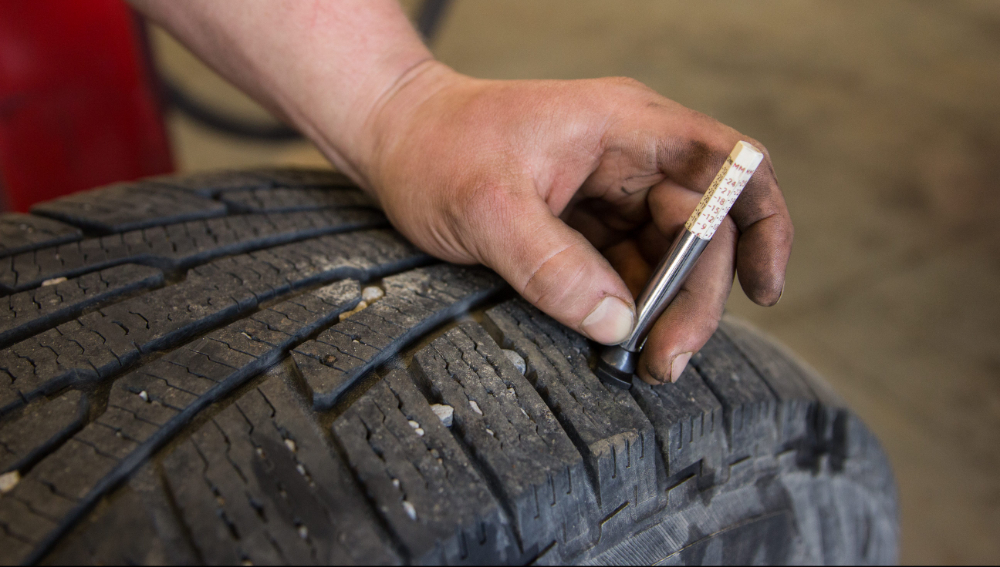
Like the saying goes, keep the rubber side down!
Sign Up Now
The tire tread is the outer part of the wheel that provides traction in all weather conditions. The protectors inevitably wear out during the operation of the car, the working height of the slope decreases. The residual tread depth should be periodically monitored and the set of tires should be renewed in time - this will reduce the risk of losing control of the car and save the car owner from fines from the traffic police.
The protectors inevitably wear out during the operation of the car, the working height of the slope decreases. The residual tread depth should be periodically monitored and the set of tires should be renewed in time - this will reduce the risk of losing control of the car and save the car owner from fines from the traffic police.
Tread wear rate depends on many factors:
Measuring the thickness of the tread layer will allow you to accurately determine the degree of tire wear and make a decision in time to replace them with new ones.
Different tires have different wear limits. Tread depth affects vehicle handling and road safety.
| According to Chapter 5 of the SDA, limiting norms for the height of the tread pattern have been established. For category M1 - passenger cars - as well as vehicles of categories N1, O1 and O2, the minimum allowable value is 1.6 mm. When using winter tires on snowy or icy surfaces - the limit is 4 mm. |
Let us explain what categories of vehicles we are talking about:
N1 - vehicles intended for the carriage of goods, having a technically permissible maximum mass of not more than 3.5 tons;
O1 - trailers, the technically permissible maximum mass of which is not more than 0.75 tons;
O2 - trailers, the technically permissible maximum weight of which is over 0.75 tons, but not more than 3.5 tons.
The traffic police officer has the right to measure the residual depth with a verified device. In case of a recorded violation, a fine is imposed on the car owner.
The new summer tire has an average tread depth of 7-8 mm. The service life of summer tires is usually 3-5 seasons with average mileage and moderate driving style.
| Residual height limitation by law is 1. |
Do not wait until the critical value is reached. Make sure you change tires in advance.
Winter tires are used in severe weather conditions: low temperatures, icy conditions, on snowy road surfaces. Worn elements make the tire ineffective on slippery winter roads. Accordingly, a more serious approach to the condition of the tire tread is needed.
Non-studded friction tire (velcro) with tread depth 8-9mm. A new studded model - from 9 to 11 mm, some firms produce a tread with a height of 12-18 mm.
| If the tread wear is up to 4-5 mm, the winter set of tires needs to be replaced. In addition, the loss of more than 50% of the metal spikes is also a reason to change the car's shoes. |
The average life of winter tires is 2-4 years.
Universal all-weather is used in a temperate climate both in winter and in summer, it is optimal at temperatures from +10 to -10˚C. This type of tire is not suitable for use in snowfall or severe frosts. SDA allows the use of all-season tires in the winter if there is a special marking:
| All-season tires last 3-4 years on average. In summer, at high temperatures, all-weather tires wear out much faster. It is recommended to buy new tires when the tread layer is abraded to a value of 2-2.5 mm. |
You can estimate the remaining tread layer in various ways:
On some tire models there are special volumetric indicators in the form of jumpers. Check: if the tread layer is worn down to the level of the jumpers, the tire is not suitable for further use.
On the surface of certain types of tires, manufacturers knock out numbers of various depths. Depreciation is assessed visually - by the visibility of individual numbers.
Depreciation is assessed visually - by the visibility of individual numbers.
With the help of measuring instruments: from a metal ruler, caliper, depth gauge to an electronic tread depth gauge.
Many motorists measure the remaining tread depth with a coin. Warning: this method of measurement is not accurate. It will not show you actual tire wear figures.
Tire tread height should be measured at least at 6 different points, preferably at 9 or even 12: in the center and from both edges of the tread, at different points around the circumference of the tire. The measurement results at all specified points must match. If they do not match, then the tire wears unevenly. The driver should find out why this is happening. Some causes of uneven tire wear are low or high pressure in them relative to the regular one, suspension failure, extreme driving style.
Old tires have become unusable, the amount of tread remaining is approaching a critical line - no need to take risks, it's time to change your car's shoes. There is a great temptation to get by with small financial costs and purchase a set of used tires. Be careful!
There is a great temptation to get by with small financial costs and purchase a set of used tires. Be careful!
Sellers advertise used tires as good or excellent condition. Do not be too lazy to personally measure the height of the tread layer. And remember: for winter tires, a residual tread depth of 4 mm is already 100% wear.
When buying used tires with tires, it is important to remember that tires from different manufacturers and seasons initially have different tread heights (when they are new). And most importantly: the tires have, accordingly, different wear limits - the tread depth at which the tire begins to lose important characteristics. These differences are most noticeable in winter and summer tires. Keep these points in mind when measuring the remaining tread depth of used tires.
The quality of domestic roads, unfortunately, does not allow tires to be used for 7–10 years. If you still decide to buy a used kit, check the year of manufacture - it is better not to consider tires older than 8 years.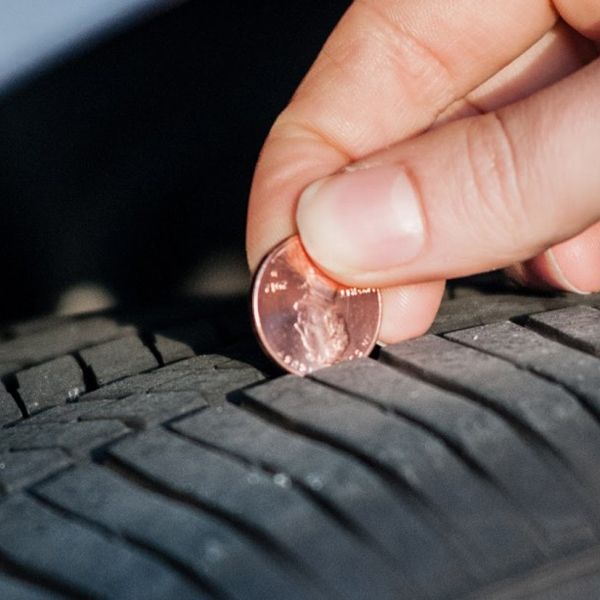
there is no guarantee for tires bought from hands;
the seller can cheat - for example, offer tires from different manufacturers in one set. Some especially enterprising salesmen even cut the tread on the worn rubber, as if the tires had not yet worn out;
you will have to spend a lot of time picking up tires from private sellers - much of what is put up for sale is only suitable for recycling;
Products may have hidden or visible defects. Visible are punctures, tears, cuts. A tire with a lot of damage can collapse in motion. Hidden defects include damage to the cord, which most often occurs after punctures or a strong blow. A car with such a malfunction may wiggle on the road, and it will be unstable;
the goods were stored in the wrong conditions, for example, under direct sunlight - this reduces the life of the tires and they will quickly become unusable, even if the residual tread depth is ideal;
it is not always possible to carry out a tire fitting in the presence of the seller, you will have to check the kit yourself after payment.
Without a specialist, there is a risk of buying tires that you cannot use. Don't skimp on safety. Purchasing a new set of tires will require more investment, but will pay off with a long period of trouble-free operation.
The maximum permissible residual tread depth for a passenger car is 1.6 mm in summer and 4 mm in winter.
SDA strictly regulate the residual height of the tread pattern. Violation of traffic rules is a reason for drawing up an administrative protocol.
For your own safety, replace worn tires on time. Better for new ones.
| Statistics say that a third of car drivers do not know how to determine the degree of tire wear and the need to replace them. Also, not all car drivers know what is the minimum tread depth allowed by our legislation. Latvian legislation stipulates that the minimum allowable tread depth for summer tires is 1. Many factors contribute to tire wear, one of which is driving style . For fans of aggressive driving, tires wear out faster because they warm up faster and begin to wear out. In addition, incorrect tire pressure , too much weight load and running gear defects contribute to tire wear. Therefore, it is necessary to regularly check the condition of the tires, because from the point of view of safety and handling, they are the most important part of the car. Every driver should carry out a visual inspection of tires at least once a month, since each tire has wear indicators, most often located in the water channels.
New tire 9 Used tire | 195 But the easiest way to tell if a tire has reached the minimum mark is to check the tread depth with a two-lat coin. The outer part of the ring-shaped coin, made of nickel and copper, is 2 mm wide. By placing a coin in the drainage channels, you can approximately measure the tread depth. You can also use the tread depth gauge provided by Pirelli Key Point. 9New Tire car. Tire pressure can be checked at any gas station, as well as in tire centers, where specialists will carry out the necessary checks, including visual inspection. At the same time, the service is free of charge and, for example, in Pirelli Key Point tire centers throughout Latvia, time for it does not need to be reserved in advance. |